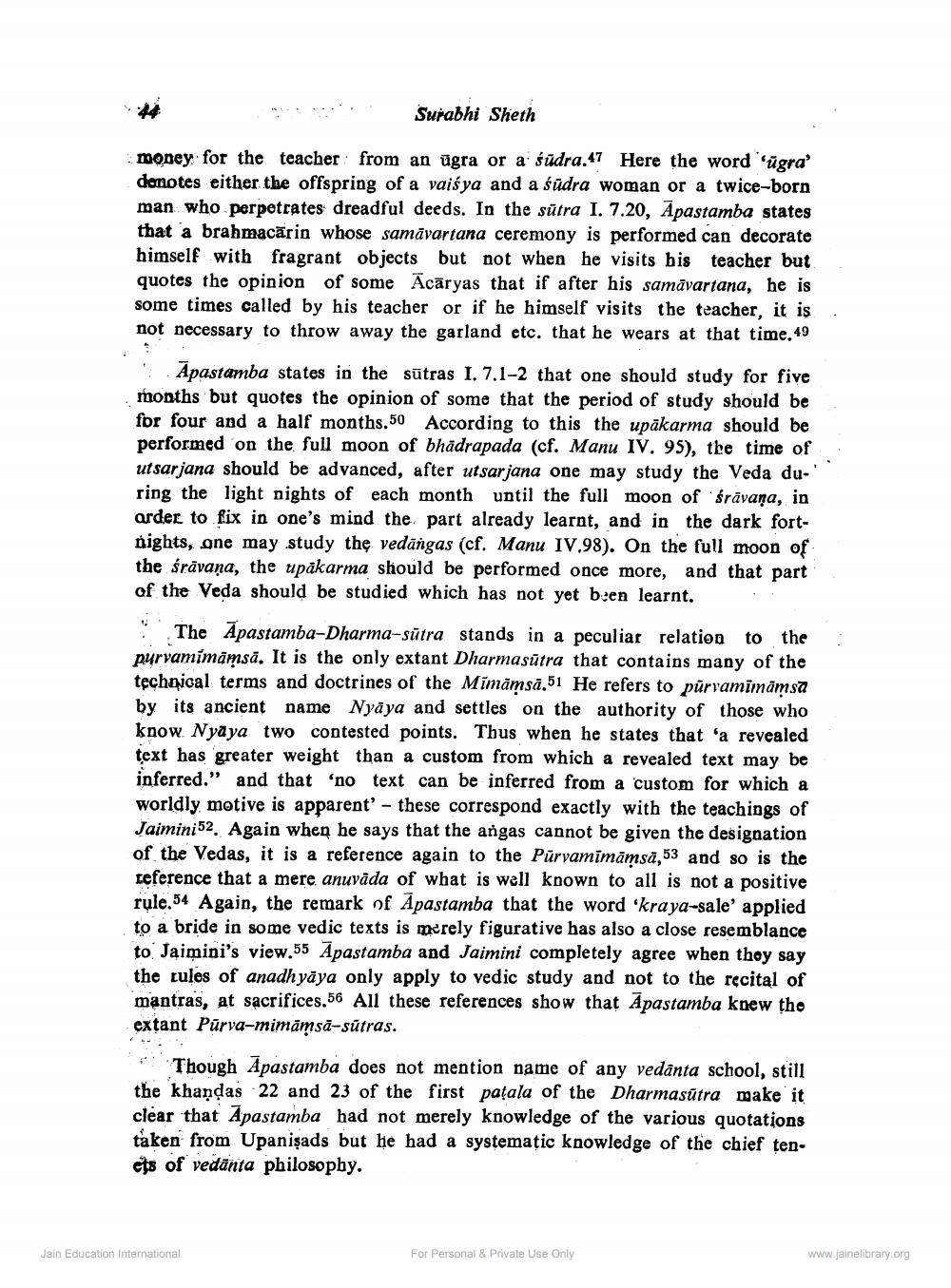________________
Surabhi Sheth
money for the teacher from an ugra or a sudra.47 Here the word 'ugra' denotes either the offspring of a vaiśya and a sudra woman or a twice-born man who perpetrates dreadful deeds. In the sutra I. 7.20, Apastamba states that a brahmacarin whose samavartana ceremony is performed can decorate himself with fragrant objects but not when he visits his teacher but. quotes the opinion of some Acaryas that if after his samavartana, he is some times called by his teacher or if he himself visits the teacher, it is not necessary to throw away the garland etc. that he wears at that time.49
Apastamba states in the sutras I. 7.1-2 that one should study for five months but quotes the opinion of some that the period of study should be for four and a half months.50 According to this the upakarma should be performed on the full moon of bhadrapada (cf. Manu IV. 95), the time of utsarjana should be advanced, after utsarjana one may study the Veda during the light nights of each month until the full moon of śravana, in arder to fix in one's mind the part already learnt, and in the dark fortnights, one may study the vedängas (cf. Manu IV.98). On the full moon of the śravana, the upakarma should be performed once more, and that part of the Veda should be studied which has not yet been learnt.
The Apastamba-Dharma-sutra stands in a peculiar relation to the purvamimamad. It is the only extant Dharmasûtra that contains many of the technical terms and doctrines of the Mimamsa,51 He refers to purvamimamsa by its ancient name Nyaya and settles on the authority of those who know Nyaya two contested points. Thus when he states that 'a revealed text has greater weight than a custom from which a revealed text may be inferred." and that no text can be inferred from a custom for which a worldly motive is apparent' these correspond exactly with the teachings of Jaimini, Again when he says that the angas cannot be given the designation of the Vedas, it is a reference again to the Purvamimämsä,53 and so is the reference that a mere anuvada of what is well known to all is not a positive rule. 54 Again, the remark of Apastamba that the word 'kraya-sale' applied to a bride in some vedic texts is merely figurative has also a close resemblance to Jaimini's view,55 Apastamba and Jaimini completely agree when they say the rules of anadhyaya only apply to vedic study and not to the recital of mantras, at sacrifices.50 All these references show that Apastamba knew the
extant Parva-mimämsä-sūtras.
—
Though Apastamba does not mention name of any vedanta school, still the khandas 22 and 23 of the first palala of the Dharmasutra make it clear that Apastamba had not merely knowledge of the various quotations taken from Upanisads but he had a systematic knowledge of the chief tenets of vedanta philosophy.
Jain Education International
For Personal & Private Use Only
www.jainelibrary.org




